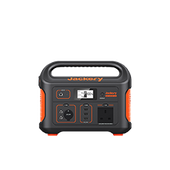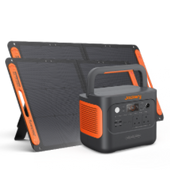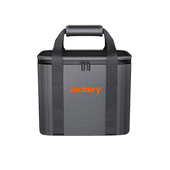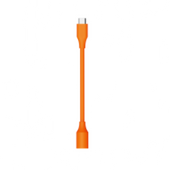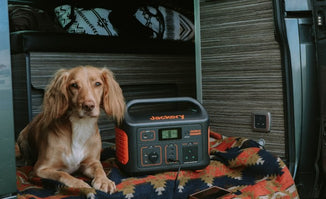The joy of recording wildlife lies in its ability to provide people with a sense of tranquillity while also offering opportunities to learn and explore the unknown world. Observers can understand the living habits of animals and stimulate enthusiasm for ecological protection.
However, challenges also exist. Wild animals are usually very sensitive to environmental changes, and noise or some behaviour can easily cause them to panic. Therefore, observers need to learn how to observe without disturbing the animals as much as possible.
Keeping quiet and environmentally friendly is very important. When observing wild animals, pay attention to turning off the shutter sound of the camera and mobile phone ringtones and carrying environmentally friendly devices like solar power banks as portable power sources to minimise the impact on the animals.
This article will take you through the equipment that you need to carry when observing wildlife for the first time and how to plan a wildlife observation.
What Equipment Do I Need to Record Wildlife?
Every year in the UK, tens of thousands of enthusiasts contribute to over 4.5 million wildlife records. [1] These passionate folks reveal how diverse the wildlife is and often spark curiosity among explorers and drive them to explore different species across the country. But for the newcomers to wildlife recording, things might be a bit tricky.
So, let’s start with the basics. What equipment do you need to record wildlife? Here’s a list of essentials you need to pack up to get those amazing wildlife shots:
1. Photography Equipment
At the very minimum, you’ll need good-quality photography gear to capture wildlife effectively. The essential gear typically includes telescopes, infrared cameras, and night vision goggles. A decent telescope lets you zoom in from afar without disturbing the animals, which makes it a great option for close-up shots.
Infrared cameras are ideal for snapping pictures in low-light areas or complete darkness, which is perfect for capturing nocturnal animals. Similarly, night vision goggles help you explore and record animals that are active after dark. But make sure you have a high-resolution camera so all your photos are sharp.
Pro tip: Don’t forget a tripod or stabiliser, especially when dealing with moving wildlife.
2. Recording Equipment
For recording wildlife, your equipment and its quality can make a huge difference in how the results turn out. Typical music recording equipment won’t suffice, so you’ll need a high-quality audio recorder to capture the sounds of the strange animals.
If you want audio and videos to go hand in hand, investing in a reliable camera with strong video capabilities is your best bet. Moreover, make sure your equipment has good storage capacity and battery life so you don’t miss any important moments.
3. Navigation Devices
When you’re out recording wildlife in the UK, it’s smart to have the right navigation devices by your side. For instance, a GPS unit will help you track your location or make your way to remote areas. This prevents you from getting lost while on the quest for incredible species.
Better yet, it helps you mark specific spots with interesting wildlife so you can come back to the areas where you found them.
4. Laptop and Mobile Phone
Once you’ve recorded the wildlife, you’ll need a laptop or mobile phone to process and manage those recordings. A handy and reliable laptop will help you organise and edit photos, sort through footage, and keep detailed records of your observations.
On the other hand, your mobile phone lets you stay connected to peers and access maps while you’re out on the field.
5. Safety Equipment
When observing wild animals, special attention should be paid to your safety. So, while you pack your recording equipment, don’t forget to add your first aid kit to the backpack to handle any emergencies on the spot.
Plus, keeping an insect repellent with you is your safest bet, especially if you’re heading to areas with insects or bugs. It saves you from bites and stings and gears you up for any unwanted situations you might come across while enjoying your wildlife adventures.
6. Solar Power Banks
Portable solar power banks are a must-have no matter where you’re recording wildlife. It provides reliable energy for your devices, especially suitable for outdoor environments far from conventional power sources.
Among other benefits, they’re environmentally friendly and use clean solar energy to offer consistent power while you’re on the road. They’re also quiet, so you won’t disturb the animals around while you charge your equipment.
Moreover, they’re energy-efficient, saving you the hassle of frequent charges or refuelling. With a portable solar power bank in your exploration kit, recording wildlife will be more fun than trouble.
How to Start Recording Wild Animals
Before starting to record wildlife, if you have a specific observation target, you can go to its common habitat. If there is no goal, you can choose an area with abundant species. [2]
How do you record the wildlife you observe? The information that needs to be recorded is:
1. Basic Animal Information
Firstly, you’ll need to record the basic information about the species that you’ve come across. This includes the size, colour, gender (if distinguishable), any unique markings, whether the animal is a social or solitary animal, etc. In addition, you also need to record animal behaviour, such as foraging, resting, interaction, reproductive behaviour, etc.
If you’re unsure, jot down the visible features of the species or snap a quick photo so you can seek help from fellow explorers later on.
2. Record Time
Next up, jot down the exact time when you spot a specific animal. This is an important part of the step, mainly because different species have different times when they’re the most active.
Recording time will help you understand whether the animal is nocturnal or diurnal (active during the daytime). This way, you can tell when to spot a particular animal and record it accordingly.
3. Discovered Location
Finally, make sure to record the specific spot where you found the animal. Describe the terrain features of the observation site, such as forests, grasslands, wetlands, etc.
If you prefer, use a GPS device to get the right coordinates, or simply mark it manually on the map. This will help others who want to visit the same location to observe the species or find out more about the animal.
Not only that, but it will help you get back to the spot more prepared with your recording gear to officially document the wildlife there.
Planning a Wildlife Observation Activity
If you’ve read till here, you’re probably ready to set forth on your wildlife research or observation activity in the UK already.
Like every other adventure, planning a wildlife observation activity takes some thought and preparation beforehand. However, following the tips and tricks below might make it easier for you to navigate.
1. Destination Selection
Before setting out on your adventure, choosing the right destination will work wonders in making things simpler for you ahead. Take your time to research the best spots in the UK for the kind of animals you wish to observe. For instance, if you’re keen on observing Canada geese, sand martins, and falcons, head to The Lake, Cornwall. [3]
Meanwhile, if you wish to catch a glimpse of pine martens or golden eagles, northern and central Scotland is your place to be. [4] This prep work will ensure you’re at the right place for the right animal at the right time!
2. Prepare the Observation Equipment
Here’s the most important yet overlooked part of the process. Double-check your observation equipment before heading out. Whether it’s a telescope, a high-quality camera, or a notebook, make sure it’s all in your backpack.
Moreover, don’t wait until you’re in the middle of the woods to realise your camera battery is running out. Thus, keep your solar backup power ready for emergencies. Since you’ll be away from home, it’s always worth investing in reliable solar power banks to help you through the process.
Solar power banks keep the devices charged throughout the journey, freeing you from the worry of frequent visits to the electrical outlets or keeping fuels with you.
3. Observe the Behaviour of Animals
Observing wildlife isn’t just about spotting animals but also about understanding them. So, take your time to watch how they move, interact, and go about their daily routines.
These details reveal a lot about a particular species. The more you observe, the sooner you might start recognising patterns of different animals and their survival strategies.
4. Keep Quiet and Concealed
Animals are highly sensitive to noise and sudden movements. The more you stay quiet, the higher your chances of recording wildlife in their natural habitat. Instead of drawing their attention, try a more concealed approach to minimise your presence.
For example, avoid talking loudly — whisper if you need to speak, and be mindful of where you step. In addition, make sure your solar power banks and generators also work silently.
5. Record the Observed Information
Record everything from this species, including basic information, discovery time and location. Then, use a laptop or other devices to organise data. This helps not just your future research but also others who might use data from your findings.
6. Safety and Environmental Guidelines
Lastly, and most importantly, take care of your safety during wildlife observations, such as not getting too close to the animals. It avoids disturbing the animals and putting yourself in danger. Plus, follow the environmental guidelines to ensure you’re not disturbing the natural spaces or leaving behind any trash.
Moreover, opting for solar power banks with LiFePO4 batteries can be a great way to support these eco-conscious guidelines. This helps you stay powered up throughout your adventures without contributing to the carbon footprint. In addition, solar power banks operate quietly, which doesn’t unnecessarily disturb the animals.
Best Solar Power Banks for Wildlife Observation
When recording wildlife, you may need a dependable solar charger for camping so you can focus on animals without facing the dilemma of battery depletion. At Jackery, we make it possible by offering a robust and powerful solar power bank for home and outdoor activities. Our top models for wildlife observation adventures include:
1. Jackery Solar Generator 1000 Plus
The Jackery Solar Generator 1000 Plus is a compact powerbank outdoor designed to fulfil all your outdoor power requirements while you’re exploring the UK’s wildlife. Here are some standout features of this model:
Portability
One of the key characteristics of our Jackery Solar Generator 1000 Plus is its portability. Despite its 1264Wh capacity and 2000W output, the Jackery Explorer 1000 Plus Portable Power Station weighs only 32 lbs, and the Jackery SolarSaga 100W solar panel weighs only 8 lbs. They don’t add much hassle to your wildlife observation adventure.
Expandable Capacity
Better yet, you can add up to 3 battery backs to the Jackery Solar Generator 1000 Plus, extending its capacity to 5kWh, making it ideal for outdoor use and emergencies.
Fast Recharge
Made with advanced solar technology, this solar power bank can fully charge from a wall outlet in just 100 minutes or 4 Jackery SolarSaga 200W solar panels in about 2 hours.
Quiet Operation
The Jackery Solar Generator 1000 Plus operates with a sound level of only 30 dB. It can quietly power your device without affecting your observation plan.
2. Jackery Solar Generator 2000 Plus
The Jackery Solar Generator 2000 Plus is our more powerful and long-lasting outdoor power solution. Its solar power banks can provide power for 1-2 days of wildlife observation, so you don't have to face the dilemma of finding a power outlet. Here are its standout features:
Power Output
Our Jackery Solar Generator 2000 Plus comes with 2-12kWh of expandable capacity and can power heavy-duty devices up to 3000W.
Longer Lifespan
Built for durability, our Jackery Solar Generator 2000 Plus comes with a tough LiFePO4 battery that’s designed to last up to 10 years, even if you use it every day. After 4,000 charge cycles, it’ll still hold about 70% of its original capacity.
Temperature-resistant
Among other solar power banks, this model is made with the latest lithium battery technology to give you the highest power even in challenging conditions. The Jackery Explorer 2000 Plus Portable Power Station can supply power in temperatures ranging from 0°C to 45°C, so you can expect to explore animals in different seasons year-round!
Quiet Operation
The operating sound of Jackery Solar Generator 2000 Plus is only 30dB, which can be used even in the library. This ensures that the animals you observe will not be suddenly scared away.

Conclusion
When recording wild animals, selecting a suitable destination, preparing necessary observation equipment and solar power banks, patiently waiting, and quietly observing the natural behaviour of animals are key steps. Meanwhile, maintaining concealment to avoid disturbing animals and keeping detailed records is crucial for subsequent data analysis.
Throughout the entire process, safety and environmental protection are our top priorities, ensuring that the activities do not impact wildlife or their habitats. Jackery provides solar power banks of different capacities for different needs. Visit our website to see which one suits you!
References
[1] Species on the map: The Importance of Your Wildlife Records. Available at: https://www.nhsn.org.uk/importance-wildlife-records/ (Accessed: 5 September 2024)
[2] Where to see wildlife in the UK? Available at: https://www.wildlifetrusts.org/visit/where-see-wildlife (Accessed: 5 September 2024)
[3] 10 of the best UK birdwatching breaks. Available at: https://www.theguardian.com/travel/2022/may/15/10-best-uk-birdwatching-breaks-birdwatchers (Accessed: 5 September 2024)
[4] Pine martens: where they live, what they eat and other facts. Available at: https://www.woodlandtrust.org.uk/blog/2018/06/pine-marten-facts (Accessed: 5 September 2024)









